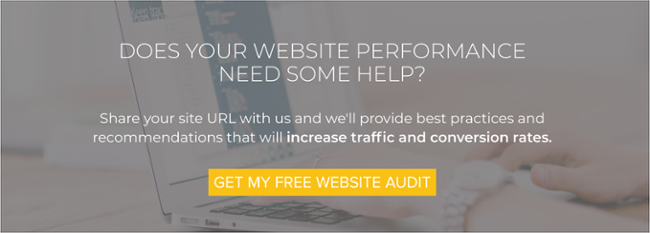4 Tips for Powerful Website Lead Generation
Is your website generating quality leads? If it’s not, you’re not alone. Many companies struggle with their lead generation strategy; your website should be a key source for driving leads directly to your company’s sales team. If your company could use more leads, continue reading for the best website lead generation strategies.
Optimize your website for better SEO
The first step to generating quality leads through your website is actually driving people to your site, and one of the best way to do that is by optimizing your search engine results. Make sure each webpage has a focused keyword. Consider keywords based on the questions, challenges or goals your clients and prospects have. Then, incorporate the keyword naturally into your page in headline text, body copy, image alt text and meta description.
Don’t go overboard with keywords, and make sure to avoid these keyword practices:
- Keyword stuffing. Search engines won’t promote you because you use specific terminology too much throughout a page. This will also make your page sound less human and natural, and visitors will notice and see this as a negative.
- Keyword spamming. This means you’ve put keywords on areas of your site that aren’t visible to visitors. One example of spamming is putting white text on a white background.
When you optimize your site for better search engine results you’ll see an increase in website traffic, and ultimately more leads.
Make navigation easy
Your site is like a map—it needs to show visitors where they are and direct them to where they should go next, while making sure they don’t get lost in the process. To do this, you need to make sure you have:
- Clear titles and labels for each page. This lets people know where they are on your site.
- Calls-to-action and forms. Calls-to-action give directions to a certain landing page or other web pages on your site. Forms are usually specific to a landing page (also known as a lead capture page) and direct the visitor to fill out the form to receive a specific offer or contact someone at your business.
- Obvious navigation bars or menus. Providing a website menu allows your visitors to navigate out of certain pages and ensures that they’ll never get lost on your site. Note: The one place you don’t want a navigation menu is a landing page. You want to make it as easy as possible for the visitor to fill out your form without distractions.
When you provide easy ways to navigate your website, you’re making it simple for visitors to find the information they want. Without it, visitors will likely leave your site early and you will miss out on new leads.
Write easily digestible body copy
We’ve all visited websites that have large blocks of text, small font sizes or so much happening on the page that we didn’t know where to look first. It makes a website visit unpleasant and usually means visitors exit the site quickly.
Make sure your site copy isn’t turning away quality leads! A few suggestions to improving site content include:
-
- Make content skimmable
- Draw the eye to one main area
- Give content a natural progression
- Keep text copy concise
- Make text copy large enough to read (14 pt font minimum)
When writing website copy, take time to think about your favorite websites as well. How do they display text? What about their content attracts you to the site? Is their content easily digestible? You may even want to implement some of their content strategies into your website text.
Turn your website into a lead conversion tool
If you want your website to generate leads, you have to turn it into a lead generation tool. You can do this by adding forms to your website to collect leads who are interested in your newsletter, blog, ebooks or other content.
When you create a form for a content offer, you need to consider the value of the offer when determining how much information to ask for. A newsletter or blog subscription form should generally ask for less information about the contact than a more valuable offer (ebook, guide, infographic, etc.). When building a newsletter form, consider asking only for an email and first name, and maybe a last name. All you really need is a first name to send a newsletter. Contrast this with an offer form, where you’ll want to ask for email, first and last name, and at least something more about the contact’s demographics (persona, role/job title, industry, how many employees are at their company, company name, etc.).
Forms are on your site to gather information and convert visitors to leads; as leads warm up to you, you’ll want to make sure your forms are gathering different pieces of information about your leads. This is where progressive profiling and smart fields come into play.
Think about the characteristics and information you’d like to know about each lead. What questions do you ask during a discovery call to qualify a prospect? Put those questions into a form and provide dropdown answers based on the types of customers you work with. Then, make your demographic form fields “smart”—this means they will be replaced with a new progressive profiling question when they’ve been filled out. Not only will you be able to convert leads, you’ll be able to qualify them! (HubSpot is a great tool use for progressive profiling; contact us to learn more!)
Website lead generation is a top concern for many business owners, and implementing the right strategies will help you quickly drive quality leads. What website lead generation strategies have you implemented? Let us know in the comments below!


